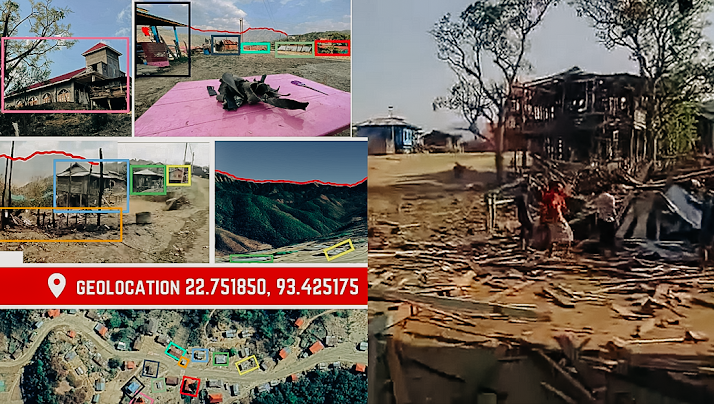Myanmar Spring Chronicle – January 27 By MoeMaKa Media:
Developments: Nation Grapples with War’s Toll
As Myanmar continues to grapple with the devastating impact of war, reports from various regions depict a harrowing reality of loss, death, and widespread destruction. Daily news sources consistently carry heart-wrenching stories of children, pregnant women, the elderly, and individuals of all ages losing their lives due to the escalating conflict.
Villages and towns bear the brunt of the military council’s armed forces, with civilians facing arrest, execution, and reprisal killings based on alleged affiliations with the People’s Defense Force (PDF). Shockingly, family members of PDF supporters are not spared from the brutality, leading to a cycle of revenge killings. Sagaing and Magway divisions have witnessed such incidents, underscoring the profound impact on local communities.
A shift in conflict dynamics is evident in urban areas, where military council forces arrest individuals suspected of being PDF affiliates or associated with the National League for Democracy (NLD). Tragically, these individuals often return home only in the form of lifeless bodies. Concurrently, urban guerrilla forces, considered a response to military oppression, target security personnel, neighborhood administrators, and individuals deemed informants.
While incidents of such nature have declined in recent months, they remain a distressing aspect of Myanmar’s tumultuous landscape. In an alarming trend, the focus has shifted from rural to urban destruction, with cities witnessing intensified bombardments and heavy artillery fire. The military council’s aerial assaults and heavy weapon attacks on areas believed to be occupied by ethnic armed groups and PDF elements result in the widespread destruction of monasteries, schools, and churches.
The destruction of religious and educational institutions has not spared Northern Shan State, where monasteries, significant structures in villages, have been reduced to rubble. This pattern is replicated in the towns and villages of Karenni State, with many Christian churches meeting a similar fate.
Schools, monasteries, and pagodas, due to their expansive structures, have become inadvertent battlegrounds. In the Sagaing region of Anyar, fleeing villagers often seek refuge in monasteries, only to face intrusion, interrogation, and violence at the hands of military council forces. The blatant disregard for the sanctity of religious spaces has resulted in loss of life within monastery premises.
International laws stipulate the protection of hospitals and schools from occupation by armed forces, yet these regulations are routinely flouted in Myanmar. Since Operation 1027, the military council has lost control of over 20 cities, each marked by the destruction of offices, residences, markets, and places of worship. Recent reports highlight the tragic destruction of Loikaw’s 2nd-floor market due to a bomb attack, adding to the toll on urban infrastructure. In Rakhine State, towns like Minbya and Pauktaw bear witness to the widespread destruction of homes and markets.
While some argue that such sacrifices are inevitable in the pursuit of dismantling a military dictatorship, the ongoing debate centers on whether the toll is too high. In this critical juncture, a rational and consensus-driven approach is deemed paramount for ushering in meaningful change and dismantling the remnants of the old system.

